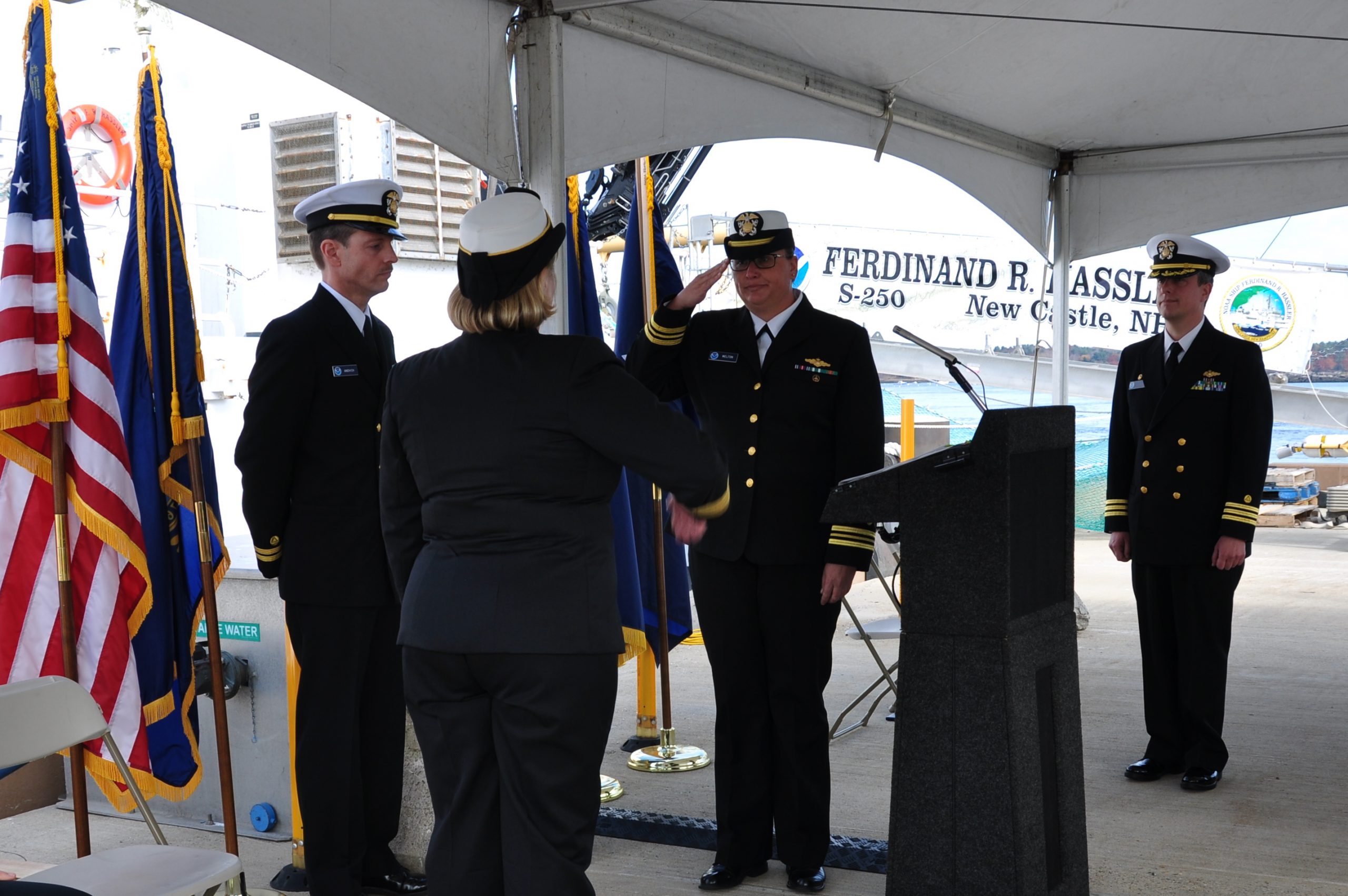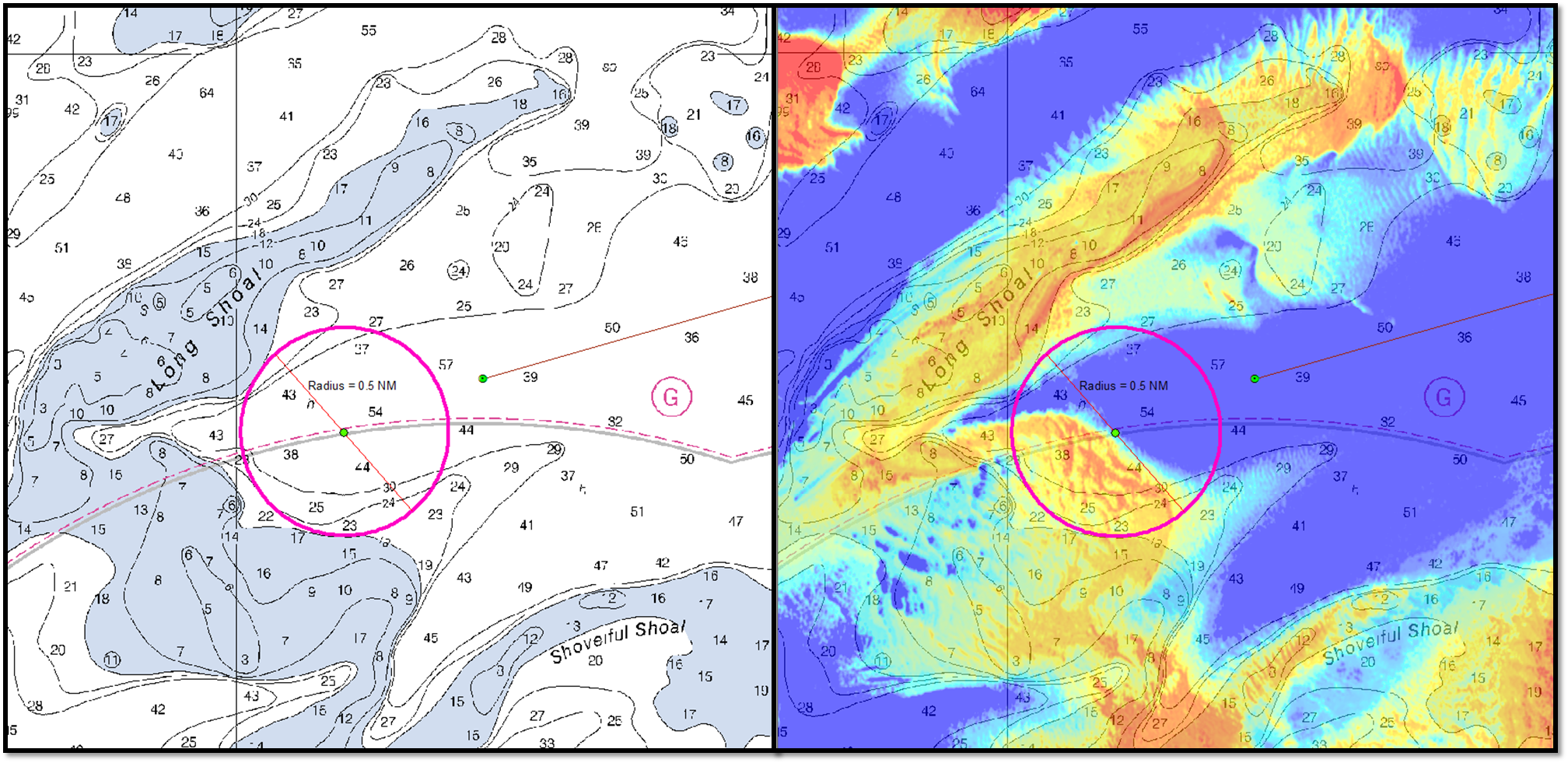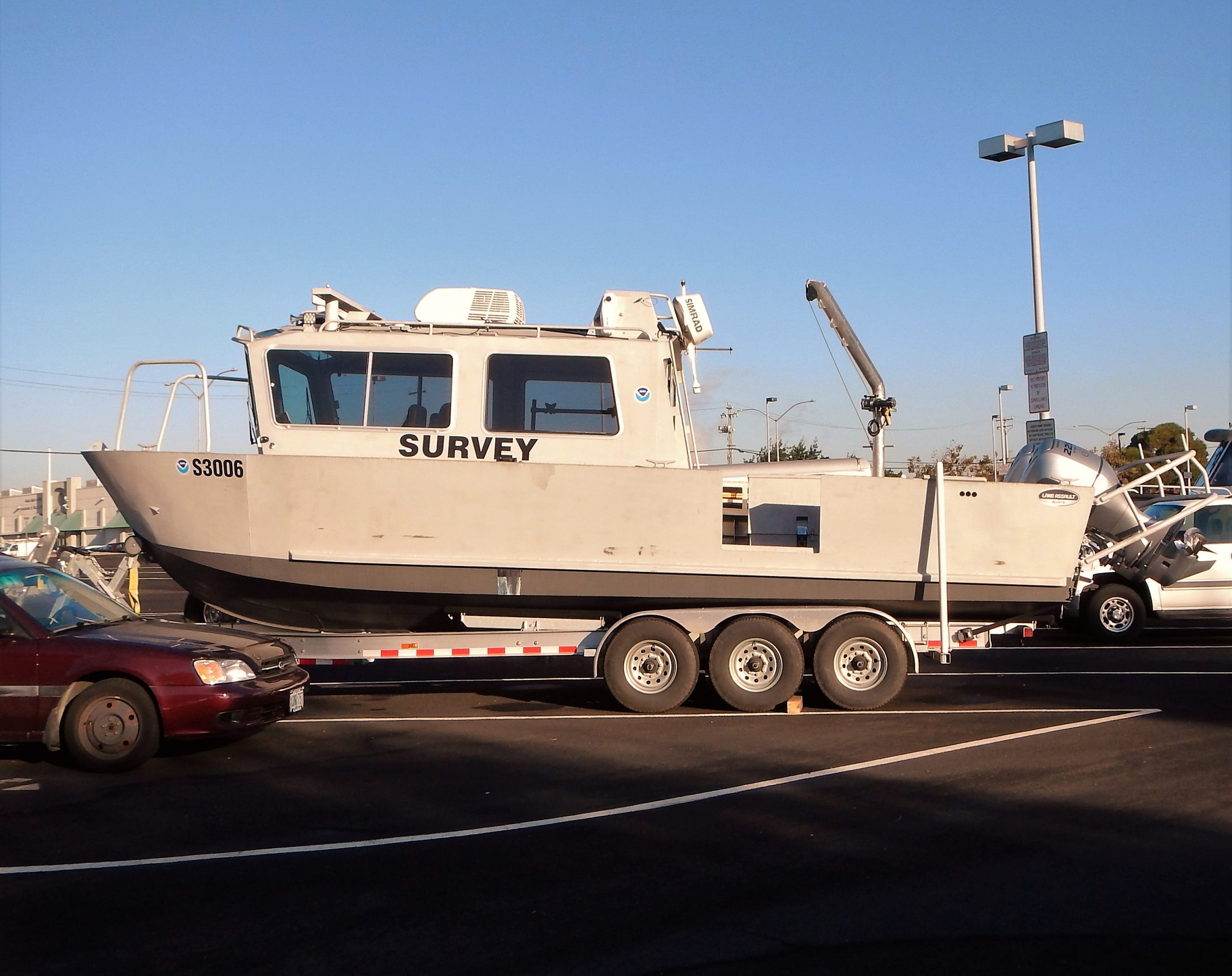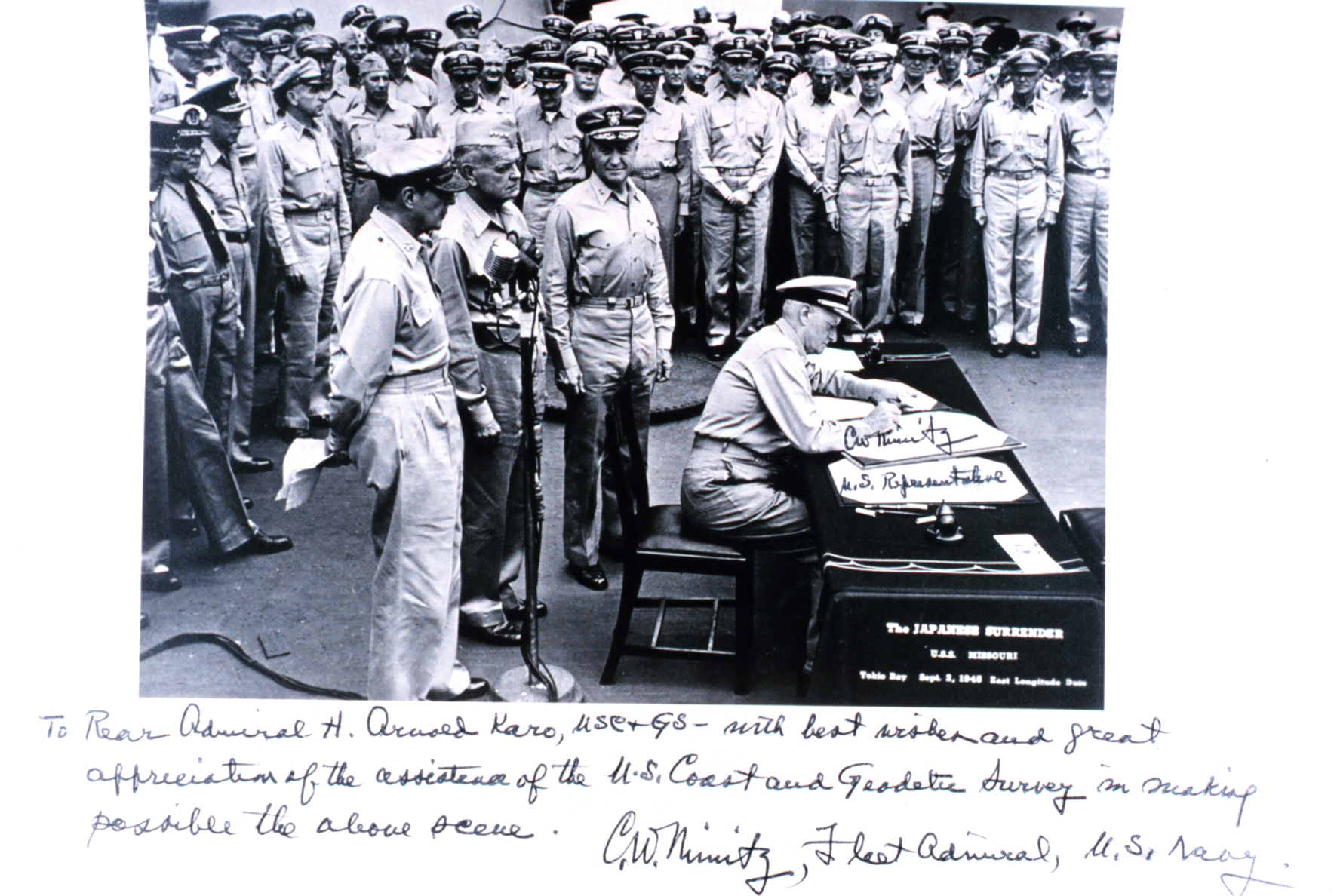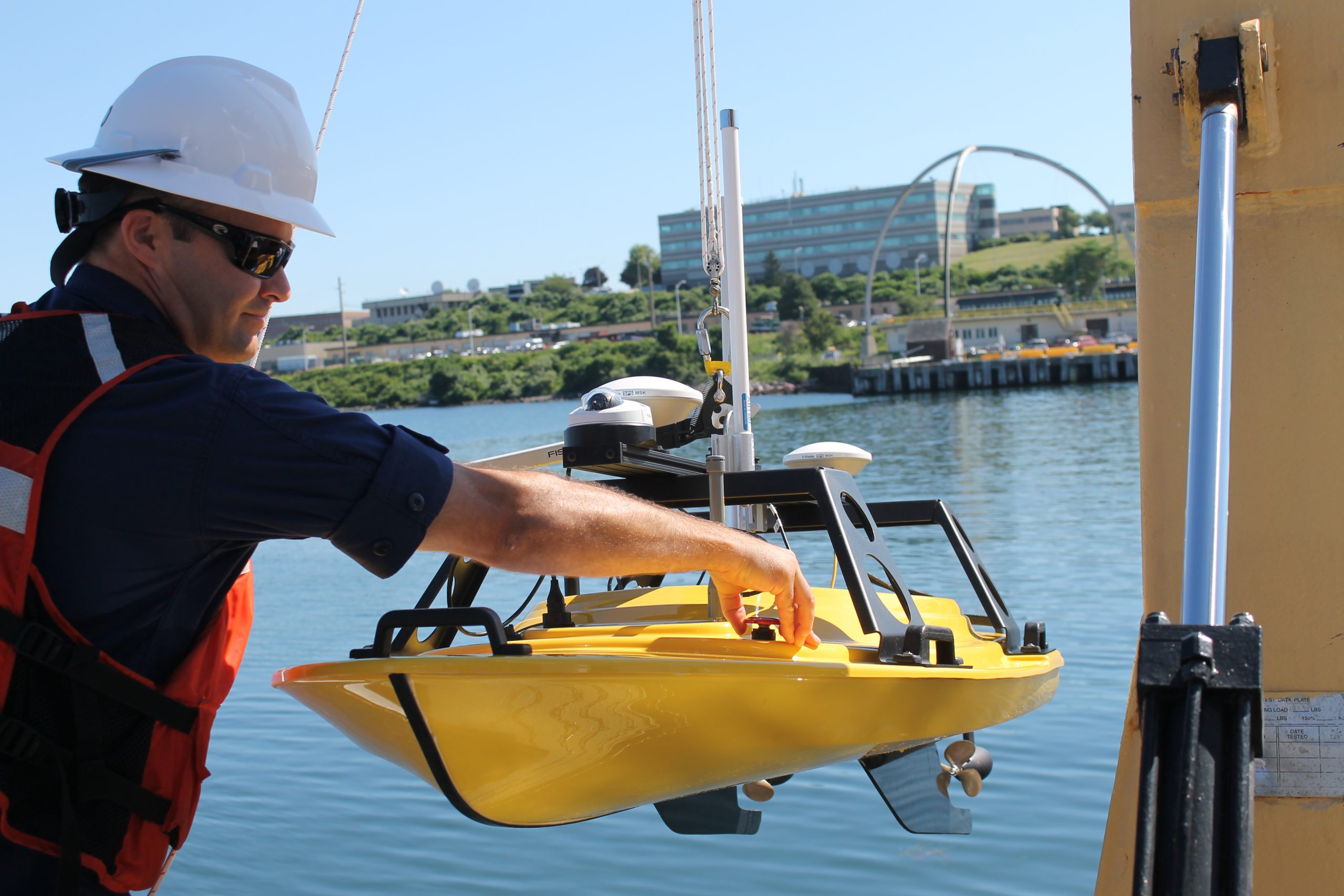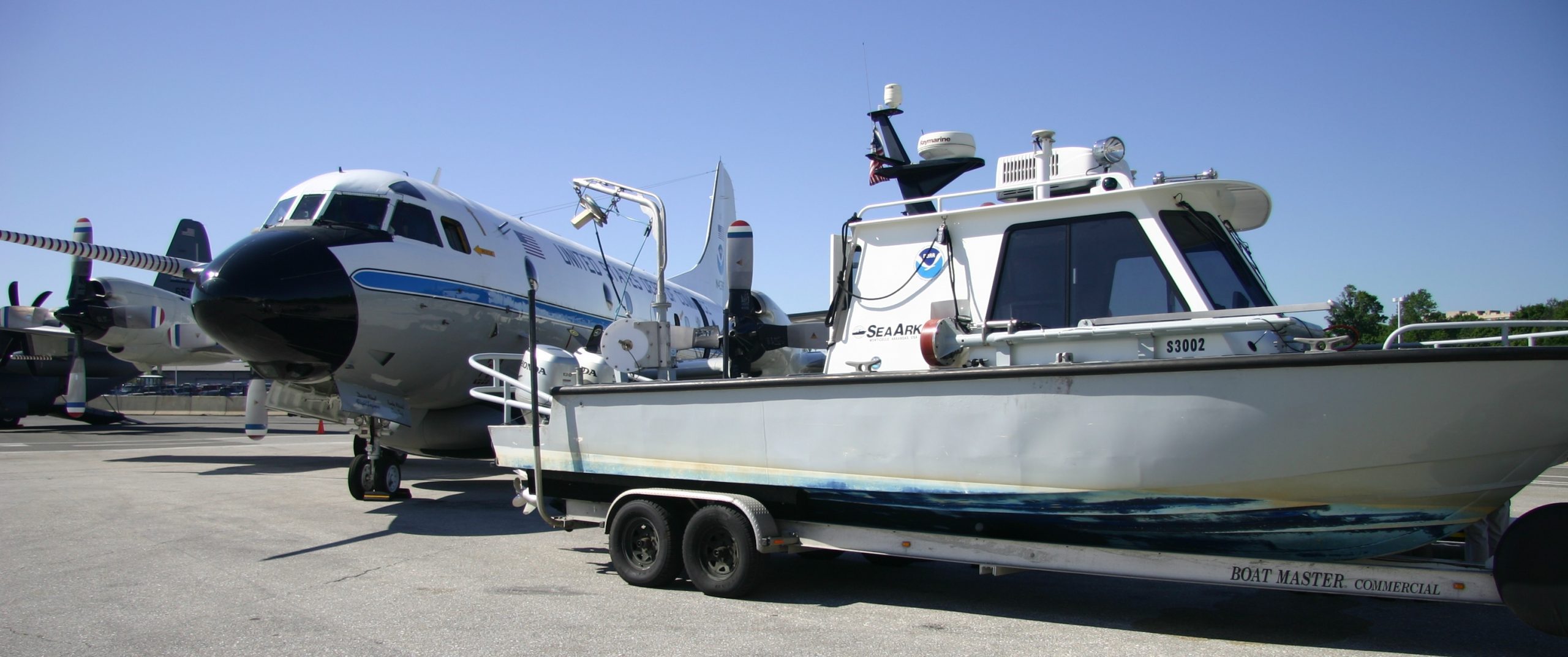The crew of the NOAA Ship Ferdinand R. Hassler (S-250) hosted a change of command on November 5, while moored at its homeport in New Castle, New Hampshire.
In front of the crew and guests – including Rear Adm. Gerd Glang, director of the Office of Coast Survey, and Capt. Anne Lynch, commanding officer of the Atlantic Marine Operations Center – Lt. Cmdr. Briana Welton accepted command of Hassler, replacing Cmdr. Marc Moser.
Welton is the new survey ship’s third commanding officer.
Continue reading “Change of command for NOAA Ship Ferdinand Hassler”
Studying the use of satellite-derived bathymetry as a new survey tool
by Ensign Kaitlyn Seberger, onboard NOAA Ship Thomas Jefferson
Nautical charts are an important tool in navigating safely in coastal waters, and Coast Survey’s mission is to keep these charts up to date. However, maintaining accurate charts can be a challenge in locations where sandy shoals may shift seasonally and present a danger to navigation. These areas differ from the current nautical charts, and bottom contours change so rapidly that it may seem an impossible task to keep up using the traditional survey methods. Office of Coast Survey and NOAA Ship Thomas Jefferson are seeking a solution to this ongoing problem and may have an answer with satellite-derived bathymetry.
Satellite-derived bathymetry (SDB) begins with using multi-spectral satellite imagery, obtained by satellites such as Landsat and WorldView2, which compares green and blue color bands.
Continue reading “Studying the use of satellite-derived bathymetry as a new survey tool”
Happy birthday to the man whose scientific integrity laid NOAA’s cornerstone
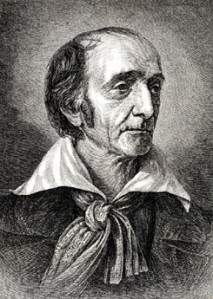
Today, October 7, Coast Survey celebrates the 245th anniversary of the birth of Ferdinand Rudolph Hassler, the Swiss immigrant whose plan to survey the U.S. coast was selected as the basis for the federal government’s first scientific foray, and who was to become the first superintendent of the U.S. Coast Survey. Hassler’s determination and uncompromising adherence to accuracy, precision, and scientific integrity during the decades-long struggle to establish the nation’s charting agency is a cornerstone of the NOAA of today.
Retired NOAA Captain Albert “Skip” Theberge, the noted NOAA historian, has written THE definitive paper on “The Hassler Legacy,” available online at the NOAA Library website. Theberge notes the formal biographical details, but then he goes beyond that, explaining how Hassler’s training and temperament contrasted with – and perhaps played into – the political machinations that resulted in a decades-long delay in the effort to create the young nation’s nautical charts.
Continue reading “Happy birthday to the man whose scientific integrity laid NOAA’s cornerstone”
New small survey boats for hard working navigation response teams
To a marine pilot looking forward to a long-awaited nautical chart update, a white NOAA survey ship “mowing the lawn” of the approaches to a port is a gorgeous site. The ship slowly moving back and forth, collecting hydrographic data from the ocean floor, is easily recognizable.
Less well known are Coast Survey’s smaller survey vessels, operated by navigation response teams (NRTs) situated strategically along the U.S. coasts. These vessels are hard worked by two- or three-member teams of physical scientists and technicians who must know everything about the vessel, the specialized survey equipment, and the science of collecting and processing data. On top of all that, they must be expert sailors.
Continue reading “New small survey boats for hard working navigation response teams”
Today in WWII history: Adm. Nimitz recognizes Coast & Geodetic Survey assistance in “making possible” Japanese surrender
On September 2, 1945, the Japanese officially surrendered to end WWII. A photo from the day, showing Admiral Chester Nimitz signing the Japanese surrender document, has his personal message: “To Rear Admiral H. Arnold Karo, USC&GS — with best wishes and great appreciation of the assistance of the U. S. Coast and Geodetic Survey in making possible the above scene. C. W. Nimitz, Fleet Admiral, U. S. Navy.”
Continue reading “Today in WWII history: Adm. Nimitz recognizes Coast & Geodetic Survey assistance in “making possible” Japanese surrender”
New unmanned surface vehicles to deliver shoaler depth measurements for NOAA nautical charts
If you look closely at any U.S. coastal nautical chart, you’ll likely find that the areas closest to the shore, shoals, and rocks do not have updated depth measurements. In many areas, safety concerns prohibit the use of NOAA ships or launches to survey the shoalest depths. In many areas, the water is too murky to be mapped with the airborne lidar systems used in clear waters. Now, however, charting those shallow areas is about to get safer, thanks to recent purchases of small, commercial off-the-shelf, unmanned surface vehicles.
This summer, NOAA Ship Thomas Jefferson will deploy a “Z-Boat,” offered by Teledyne Oceanscience out of Carlsbad, California.
Continue reading “New unmanned surface vehicles to deliver shoaler depth measurements for NOAA nautical charts”
Hurricane Katrina: 10 Years Later
Ten years ago this week, Hurricane Katrina devastated the Gulf Coast, affecting millions of lives. This disaster brought together all of Coast Survey’s capabilities on an unprecedented scale to help in response and recovery efforts in the storm’s aftermath. Ten years later, Coast Survey reflects back on the planning and response to Hurricane Katrina, and looks to their progress in developing tools to aid in coastal resilience.
Continue reading “Hurricane Katrina: 10 Years Later”
Coast Survey adds navigation assets to NOAA preparations for Hurricane Danny
Hurricane Danny is churning in the Atlantic. NOAA hurricane models are churning through data, and two NOAA sensor-packed Hurricane Hunters — a Lockheed WP-3D Orion and a Gulfstream IV — are in Barbados, flying into the storm to collect storm data. Over the next few days, scientists on the ground and in the air will help us determine where Danny will go, and how big the hurricane will get.
In the meantime, NOAA Office of Coast Survey is tracking the NOAA forecasts and making initial preparations for deployment of hydrographic survey equipment to Puerto Rico or the U.S. Virgin Islands, if needed.
Continue reading “Coast Survey adds navigation assets to NOAA preparations for Hurricane Danny”
Report from the Arctic: Surveying Kotzebue Sound 2015
By Starla Robinson, project manager in Coast Survey’s Hydrographic Surveys Division
Two hundred years after Otto von Kotzebue and the crew of the Ruiric explored what would later be named Kotzebue Sound, NOAA ships Fairweather and Rainer follow in the same tradition. Two centuries ago they were searching for the Northwest Passage in support of trade. Today, we explore to improve the science and safety of navigation in support of commerce, environmental protection, and local communities. Our bathymetric data and observations will also be used to better inform coastal decision-making.
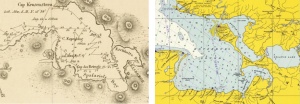
Continue reading “Report from the Arctic: Surveying Kotzebue Sound 2015”
Coast Survey welcomes Guy Funnell from the UK Hydrographic Office
Hydrographic offices around the world often share expertise and experiences in order to improve products and processes. In that vein, NOAA’s Office of Coast Survey welcomes Guy Funnell, a product manager from the United Kingdom Hydrographic Office who will be working with us in a unique employee exchange.
The exchange will be of immense benefit to Coast Survey, as we continue to explore practices and technologies to improve Coast Survey’s product management.
The UKHO is an equivalent to Coast Survey, but with some major differences. While Coast Survey and the UKHO have a working relationship going back over a century, the UKHO got a jump on us in chart production, producing their first chart (of Quiberon Bay in Brittany) in 1800. We came along a little later, when President Thomas Jefferson signed legislation in 1807, calling for a survey of the coast.
Continue reading “Coast Survey welcomes Guy Funnell from the UK Hydrographic Office”

